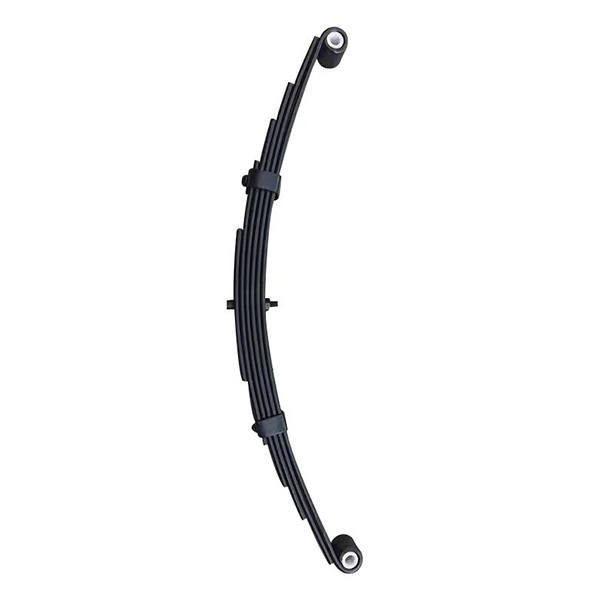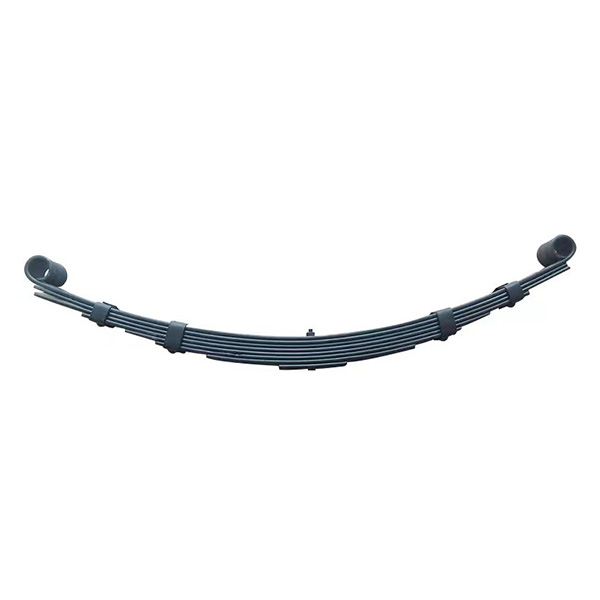
Understanding the Basics of Leaf Springs
Leaf springs are one of the oldest and most reliable suspension components in the automotive industry. They consist of multiple layers of steel strips, known as leaves, that are bound together to absorb shocks and maintain the vehicle’s load-bearing balance. Commonly used in trucks, trailers, and off-road vehicles, leaf springs play a crucial role in ensuring ride stability, load distribution, and overall handling performance.
The fundamental working principle of a leaf spring lies in its ability to flex under pressure. As the vehicle encounters bumps or uneven terrain, the leaves compress and rebound, absorbing the impact and maintaining tire contact with the road. This simple yet effective mechanism makes leaf springs a preferred choice for heavy-duty and commercial applications.


Types of Leaf Springs and Their Applications
There are several types of leaf springs used across various vehicle categories:
· Double Eye Leaf Springs: Both ends have eyes for mounting to the chassis, offering balanced stability and smooth motion.
· Slipper Leaf Springs: One end is open or “slips” into a hanger, simplifying installation for light trailers and smaller vehicles.
· Parabolic Leaf Springs: Designed with tapered leaves, these offer better ride comfort and reduced weight without sacrificing strength.
· Mono Leaf Springs: A single thick plate used in lighter vehicles for minimal weight and improved flexibility.
Each type serves specific applications — from light-duty cars to high-load trucks and agricultural trailers — making the choice of spring critical for optimal vehicle performance.
Modern Materials and Manufacturing Technologies (2025 Update)
In 2025, advancements in metallurgy and manufacturing have greatly enhanced leaf spring technology. Modern springs are now made from high-tensile alloy steels or composite materials like fiberglass-reinforced plastics (FRP), significantly reducing weight while increasing strength.
Automated tempering, shot peening, and precision forming processes ensure consistent quality and fatigue resistance. These innovations not only improve the lifespan of the springs but also enhance fuel efficiency by lowering the overall vehicle weight.
Key Benefits of Using Leaf Springs
1. Superior Load Distribution: Leaf springs evenly distribute the load across the vehicle’s chassis, ensuring better weight balance and improved handling.
2. Cost-Effective Durability: Their simple design allows for easy maintenance and long service life, even in demanding conditions.
3. Excellent Stability: By minimizing axle movement and sway, leaf springs provide stable performance during towing or hauling.
4. Heavy-Duty Performance: Designed to support large payloads, they are ideal for trucks, buses, and industrial transport vehicles.
5. Easy Maintenance and Replacement: Standardized designs make replacement straightforward, reducing downtime for fleet operators.
Advanced Applications: Beyond Traditional Suspension Systems
Modern industries are exploring leaf springs beyond conventional vehicle use. In off-road and defense vehicles, reinforced multi-leaf systems enhance ground clearance and shock resistance. In electric trucks, lightweight composite leaf springs improve efficiency by reducing unsprung weight.
Even railway and aerospace sectors have started adopting modified spring technologies for load damping and vibration control. The evolution of leaf springs demonstrates their versatility and continued relevance in the modern engineering landscape.
Conclusion: The Evolution of Leaf Springs in 2025
Leaf springs have evolved from simple metal strips to precision-engineered suspension components that balance strength, flexibility, and innovation. With ongoing advancements in materials and design, they continue to play a vital role in the future of transportation and heavy-duty performance. Whether for trucks, trailers, or specialized machinery, leaf springs remain a cornerstone of reliable suspension technology in 2025 and beyond.
Meta Description:
Explore the 2025 Leaf Springs Guide — from fundamental principles to advanced industrial applications. Learn about types, benefits, new materials, and the latest innovations shaping modern suspension technology.





